It was a clear and sunny day with a brisk breeze, perfect for a trip on the Mersey ferry. We threaded our way through the city centre towards the Pier Head, via Mathew Street and its hordes of tourists, passing the Beetham Plaza bucket fountain, which wasn’t working today, but it has recently been saved from demolition by being Grade II listed.
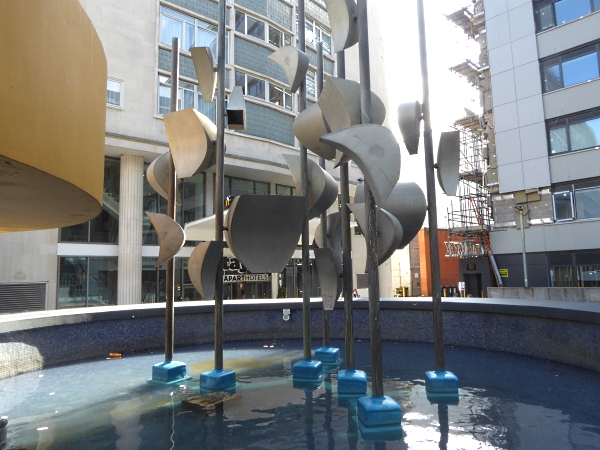
More tourists were flocking around the Beatles statues at the Pier Head. We took the 11am ferry to Seacombe and walked 2½ miles along the front to New Brighton. I was hoping that we might see the little migratory birds called Turnstones, which return to the Mersey around this time of year. From Seacombe we got a great view of the cruise ship docked in front of the Liver Buildings, the Magellan of Nassau, which must have been the source of the gangs of tourists.
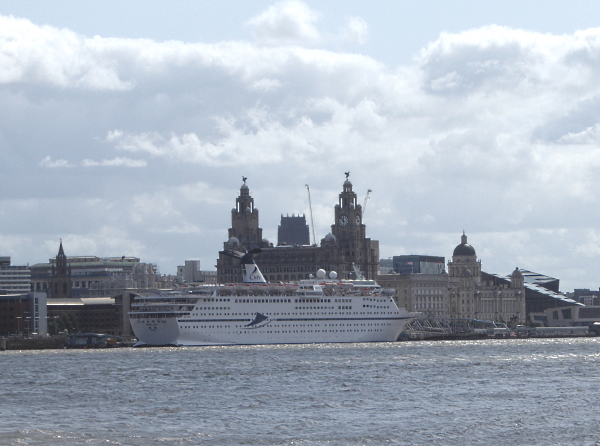
Just north of the tunnel ventilation tower is a slope with an ascending path, going through rough grass and wildflowers. There were Chicory, Knapweed, Ragwort and Red Clover. It was a magnet for butterflies, and we noted several Large Whites, a Green-veined White, a Painted Lady, some Gatekeepers on the Ragwort and a probable Holly Blue, but it was distant and fast-moving. Painted Lady caterpillars are said to feed on Thistles, and we wondered if Knapweed counted, but it seems it doesn’t. The caterpillars eat thistles from the genera Cirsium and Carduum, but Knapweed is Centaurea. The butterflies like knapweed nectar, though. We also spotted a spider which had just caught a bluebottle and was wrapping it in silk.
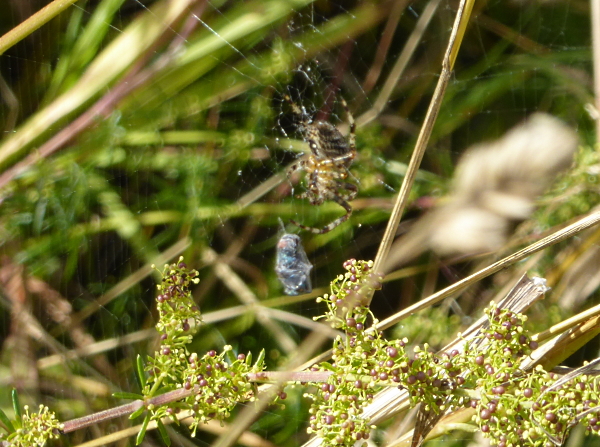
It was coming up to high tide (due 1.44) and there were fishermen all the way along the railings (and one fisher lady). It was a competition, they said, and they were hoping for Dogfish or Thornback Ray, but all that most of them had caught were small flounders about 8″ (20cm) long. They were too small to take home and eat, so were thrown back alive.
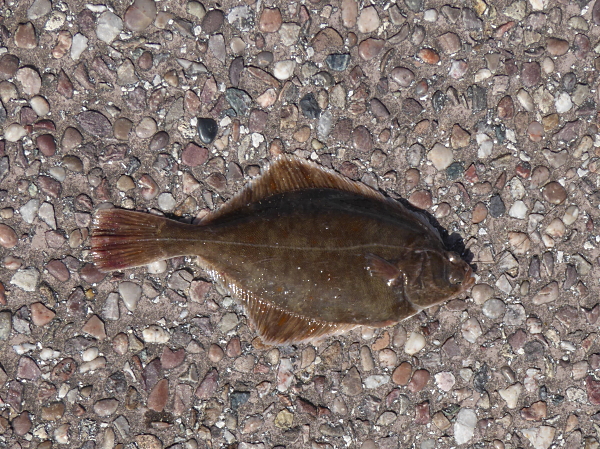
We lunched at Egremont, and then stopped to watch an unusual gathering of what seemed to be a black evangelical church congregation having a baptism ceremony. They were on the beach tucked into the north side of the breakwater, dressed in white robes and bright headscarves. They were singing hymns in what sounded like a South African style. Two pastors stood in the breaking waves, risking being knocked off-balance. Two little lads of about 10 years old, and then an adult, were held and quickly triple-dunked.
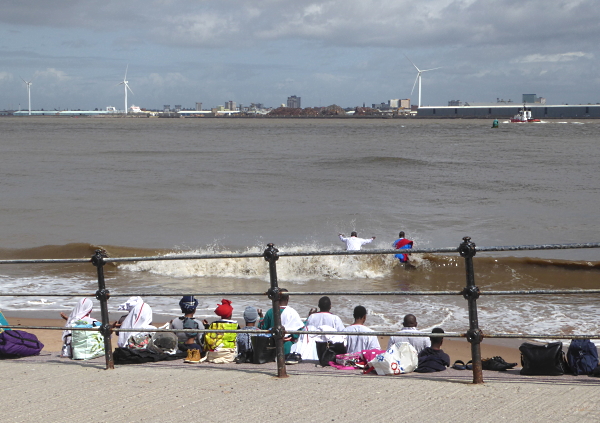
On the breakwater by Mother Redcap’s care home there were lots of birds waiting for the tide to go out again. Many Oystercatchers and Ringed Plovers. A Herring Gull, a Lesser Black-backed and several Black-headed Gulls. Amazingly there was a Little Egret. Not seen one of them here before. Also several Starlings and a couple of Redshanks. I thought I spotted a Turnstone, then it was gone and not seen by anyone else, but now I can see one or more on my photo, I think.
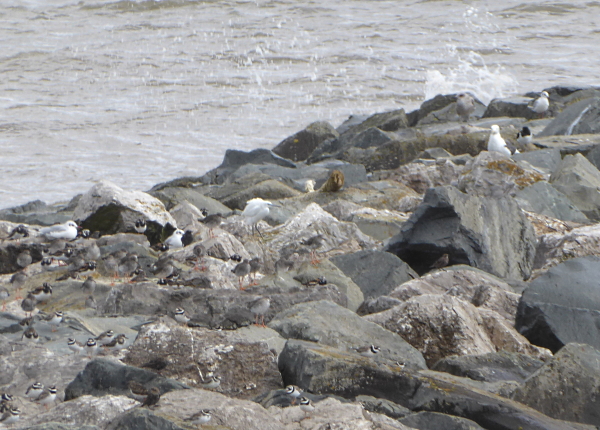
On the remnant of beach was a washed-up domed jellyfish about a foot across (30cm). I think it was Rhizostoma pulmo commonly known as a Barrel Jellyfish or a Dustbin-lid jellyfish, common in the Irish sea and a favourite food of Leatherback turtles.
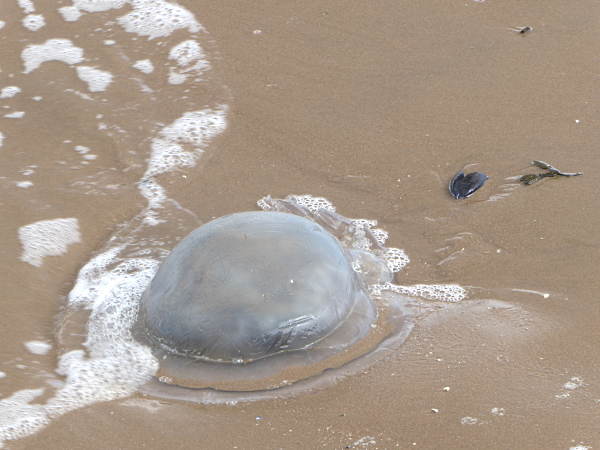
We had a look around Vale Park, knowing there was a Mulberry in there somewhere. Got it! It is bearing lots of berries, but they are still white or red, and not ripe yet. Mulberries are highly desirable to forage for, so no doubt plenty of local Mulberry-fanciers are watching it closely!
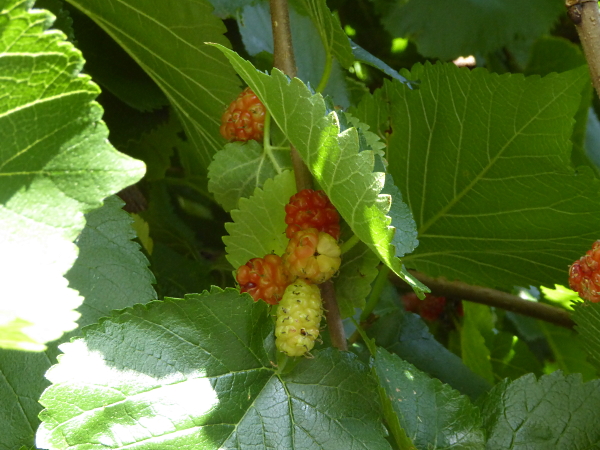
New Brighton was having a Pirate and Mermaid festival, and it was a lovely day for them. Many families and kids were out in fancy dress, and the driftwood Pirate ship the Black Pearl was well-patronised.
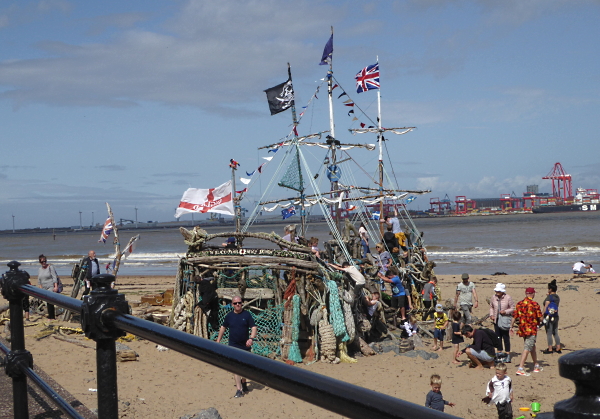
The container ship SM Vancouver had just come in on the high tide and was docked by the new red cranes at Seaforth. There was no sign of any unloading activity from the cranes, which we would have liked to watch.
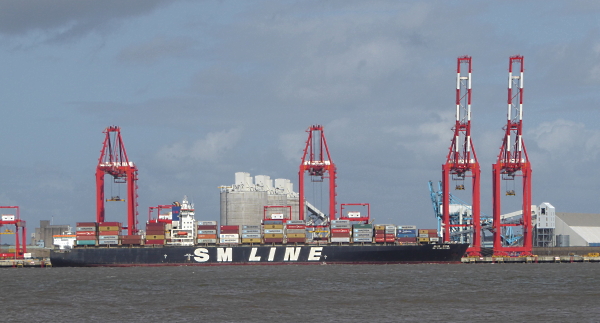
On the pontoons in the Marine Lake was a huge sculpture, made of plastic bottles. It’s called ‘Message in a Bottle’ and is by artist Lulu Quinn. It is a 26ft (8m) bottle made entirely from recycled plastic, which at night becomes a beacon, illuminated from within. It’s message is to challenge our throwaway culture and spark positive environmental change.
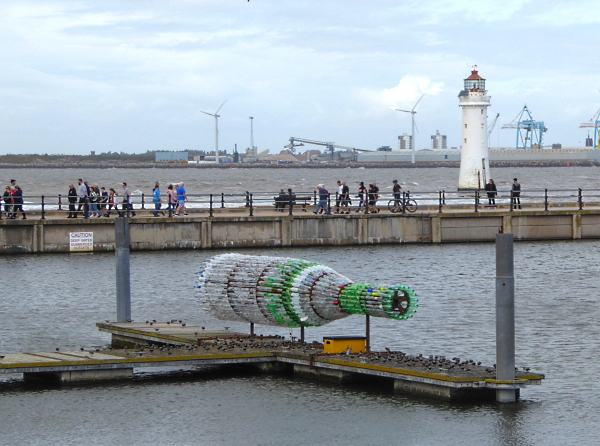
Below the ‘Message in a Bottle’ were the hoped-for Turnstones, over 100 of them. They are little fat brown and orange waders with bright red legs. I think they are cute.
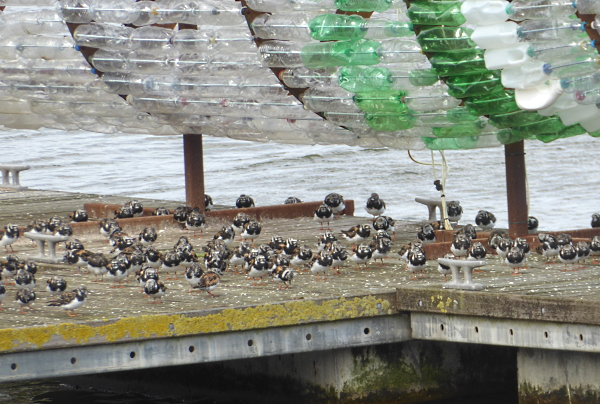
A further bulletin on that mystery tree in Queen Square, which we looked at again this morning. Someone suggested that it might be a Terebinth or Turpentine Tree Pistacia terebinthus. However, in view of that species’ extreme rarity (and presumably the great expense of a sapling), I didn’t think it was reasonable that Liverpool would have planted one of them in a bus station. It doesn’t smell of turpentine either. However, someone from the Facebook group about trees may have finally solved it, suggesting it is a Honey Locust Gleditsia tricanthos (which I had suspected already) and that the red bits aren’t flowers and fruit at all, but are leaf galls caused by the fly Dasineura gleditchiae. That sound more like it. I think you can see on this picture that the lighter lumps in the lower centre seem to be within the leaves (suggesting a larval parasite), not separate flowers or fruit. It’s a rare insect (or under-reported) if that’s right.
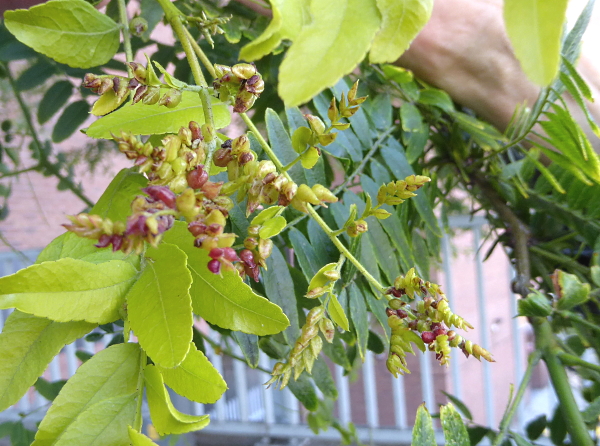
Public transport details: Mersey ferry at 11 am, arriving Seacombe 11.20. Returned from New Brighton / Morrisons on the 433 bus at 3.40, arriving Liverpool 4.10.
